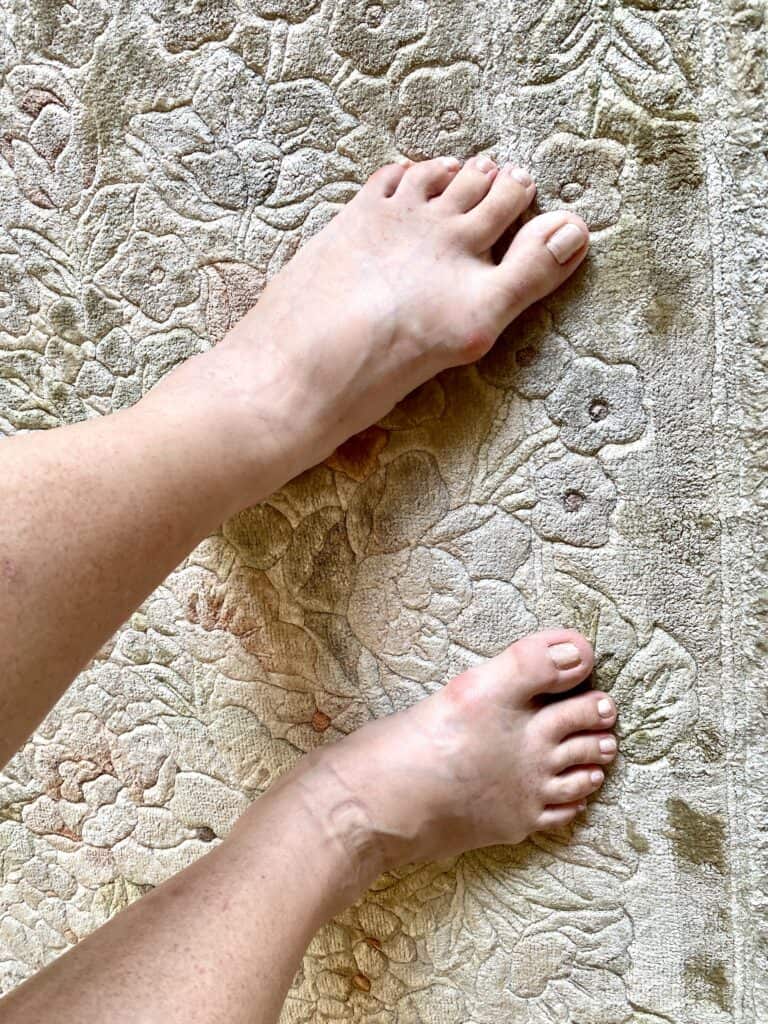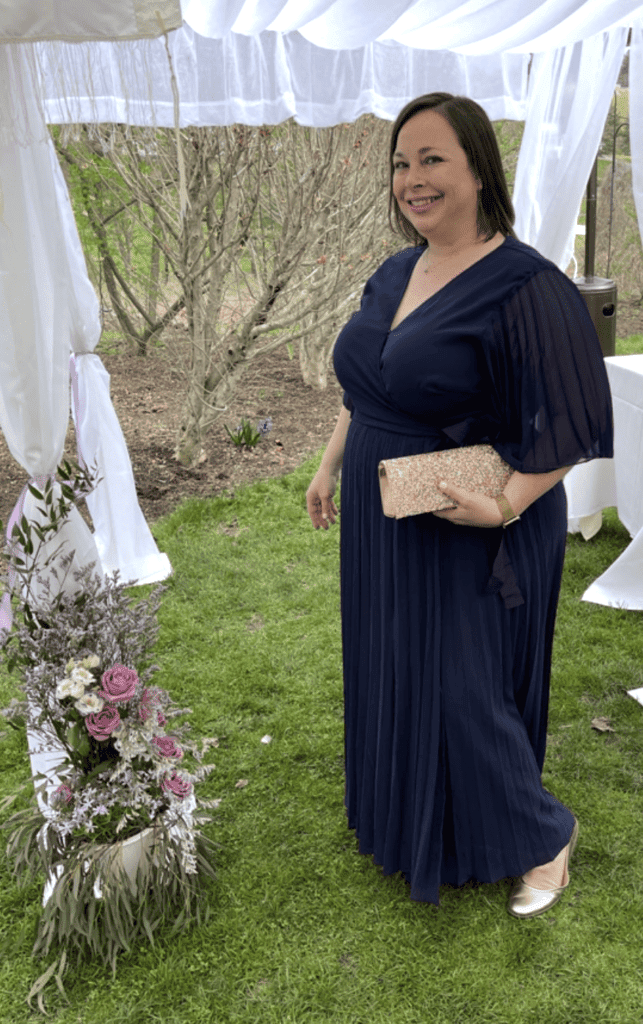This post is sponsored by Stryker. Only your doctor can help you decide if surgery is your best option.
I’ve always had foot issues. You can call it a love-hate relationship. I love the way my feet carry me through my life, whether it’s exploring NYC, working, taking care of my family in our home, or dancing. But the hate relationship? It’s my bunions.
My mother and my grandmother always had bunions, and I know how much my mom has suffered. We’ve got the same feet, however mine are much bigger! I’ve always had a problem with finding shoes and no matter what brand or size I tried, I was always uncomfortable. However, I developed bunions in my mid 20’s, and they’ve been a constant source of discomfort ever since, adding to even more issues with my feet. Through the years, I’ve had jobs as a production assistant and classroom teacher, which means being on my feet for at least 8 hours a day.

Bunion Symptoms:
If you don’t know what bunions are, they are those unattractive, often painful bumps that form on the joint at the base of the big toe. They push the toe inward toward the other toes, sometimes causing the entire foot to misalign. The pain can range from mild discomfort to throbbing agony, especially after a long day on my feet. While my left foot looks worse, it’s actually my right foot that is more uncomfortable. You can see that I have prominent red bumps on the base of my big toes, which get sore when I walk too much or when I wear shoes. While I’m lucky my bunions don’t hurt when I bend my foot now, I hope that doesn’t change in the future. I can see how my toes are slowly shifting towards my outer feet.
While the exact cause of bunions are unclear, genetics and lifestyle choices influence the likelihood of developing bunions and the speed at which they progress and get worse like wearing tight-fitting or high-heeled shoes1.
In my case, I believe genetics plus my own shoe choices and career have also played a role. It seems like everyone on my mother’s side of the family has had bunions, so I wasn’t surprised that I developed them also.

Bunion Relief:
I can get some relief by resting my feet after a long day of work or exploring NYC. I recently did a long sightseeing day over a month ago with a friend from London and my feet are finally recovering now. It’s getting longer and longer before my bunions feel better. I also use remedies like bunion pads if I know I must walk around a lot and that does help a little. I also like to soak my feet and elevate them when I get a chance. If I don’t need to wear fancy shoes, you can find me in sneakers and wearing supportive slippers at home to cushion my feet. I am careful with every shoe I wear – even sandals! Due to having flat feet, I sometimes wear orthotics from my podiatrist to help my bunions feel better because of the extra support.
Living with Bunions:
I tried to ignore my bunions. I switched to wider shoes, made sure my heels were at most 1 to 1 ½ inches, and tried to wear sneakers as much as possible. While this did offer bunion relief, it didn’t fix the issue. While people living with bunions might find relief through nonsurgical treatment like wearing wide-toed shoes, over the counter medications, foot pads, ice packs, etc., surgery may be a long-term solution. I have not had bunion surgery myself. That’s why I was curious to learn about Stryker, one of the world’s leading medical technology companies.

Stryker Bunion Surgical Treatment Options:
A leader in bunion solutions, Stryker offers various options that allow surgeons to treat their patients with the solution that is best suited to their specific needs. As they say, no one size fits all!
Stryker offers innovative surgical treatments, such as PROstep minimally invasive surgery and LapiFuse bunion correction surgery. Treatments that were designed to help you “free your feet” and resume your mobility and active lifestyle.
The LapiFuse procedure preserves the joint movement of the big toe, it is specially designed to improve mobility, letting you get back to your active lifestyle2. It’s designed to preserve toe length, reduce pain and restore the natural appearance of the foot3.
PROstep is a minimally invasive surgery that gives patients the pain relief they need while providing the fast recovery they desire4,5. The difference? Compared to the traditional bunion surgery, the minimally invasive PROstep bunion surgery gets patients back on their feet faster4,5, with less pain4, and smaller scars6.
Only your doctor can help you decide if surgery is your best option. Click here to learn more at Stryker’s website.
This is a paid advertisement sponsored by Stryker.
Individual results and activity levels after surgery vary and depend on many factors including age, weight and prior activity level. There are risks and recovery times associated with surgery and there are certain individuals who should not undergo surgery. Only a physician can tell you if these products and associated procedures are right for you and your unique circumstances. Please consult with a physician for complete information regarding benefits, risks, anticipated implant duration and possible outcomes.
For important risk information on PROstep MIS visit: patients.stryker.com/prostep
For important risk information on LapiFuse visit: patients.stryker.com/lapifuse
References:
- www.aaos.org
- Galli, et al. JFAS vol. 54 (2015) 437–440.
- Walker, Harris. Foot Ankle Clin N Am vol. 24 (2019) 641–648
- Lee M, Walsh J, Smith MM, Ling J, Wines A, Lam P. Hallux Valgus Correction Comparing Percutaneous Chevron/Akin (PECA) and Open Scarf/Akin Osteotomies. Foot Ankle Intl 2017; 38(8): 838-846.
- Maffulli N, Longo UG, Oliva F, Denaro V, Coppola C. Bosch Osteotomy and Scarf Osteotomy for Hallux Valgu
- Lam P, Lee M, Xing J, Di Nallo M. Percutaneous Surgery for Mild to Moderate Hallux Valgus. Foot Ankle Clin N Am 2016; 21: 459-477.




Leave a Reply